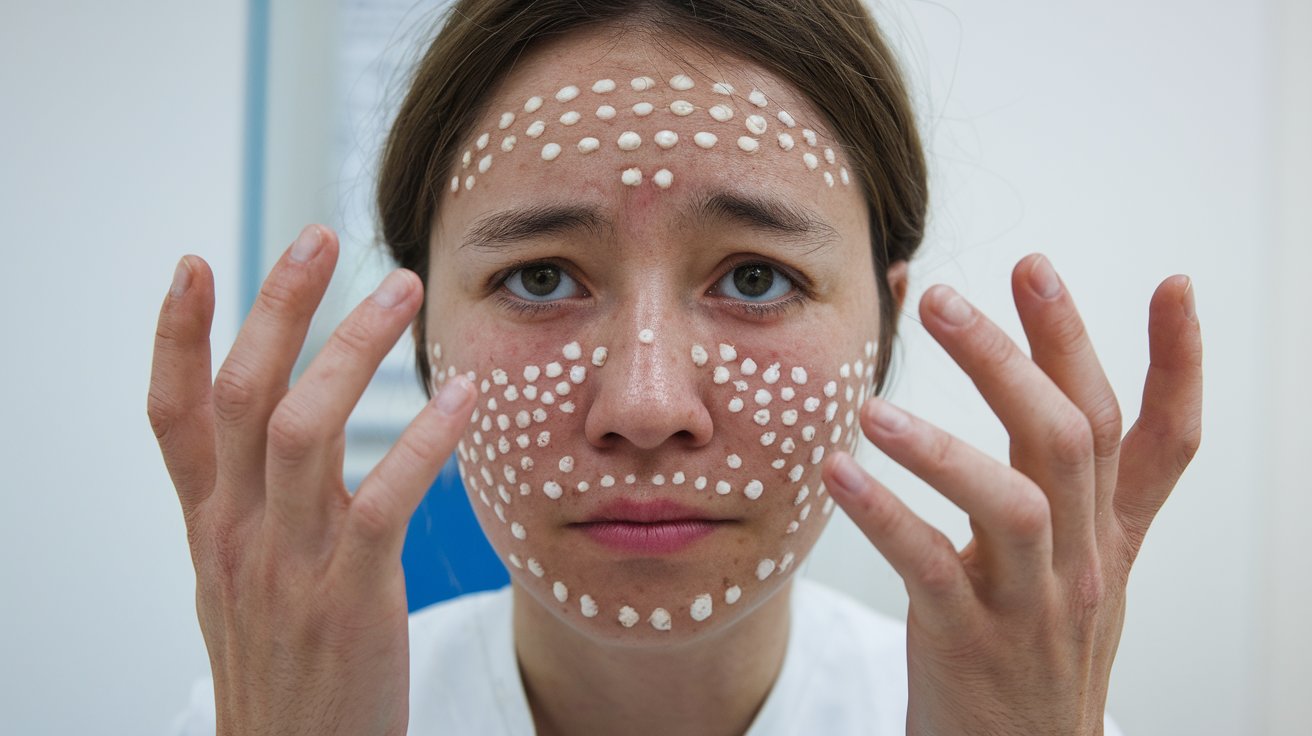
What is Multiple Evanescent White Dot Syndrome (MEWDS)? MEWDS is a rare inflammatory eye condition that primarily affects young, healthy individuals, especially women. Characterized by the sudden appearance of white dots in the retina, it often follows viral infections or other systemic illnesses. Patients typically experience acute, painless vision loss in one eye, along with flashes of light and blind spots. The condition usually resolves on its own within weeks to months, but understanding its features, diagnosis, and management is crucial for those affected. Dive into these 35 key facts to get a comprehensive overview of MEWDS and its impact on vision.
Key Takeaways:
- MEWDS is a rare eye condition that affects young women, causing vision loss and other symptoms. Early diagnosis and proper imaging techniques are crucial for effective treatment.
- While MEWDS often resolves on its own, some patients may experience complications and recurrent episodes. Understanding the condition's associations and prognosis is essential for proper management.
What is Multiple Evanescent White Dot Syndrome?
Multiple Evanescent White Dot Syndrome (MEWDS) is a rare eye condition that can be quite puzzling. It primarily affects young, healthy individuals, especially women. Let's dive into some key facts about this intriguing syndrome.
-
Definition and Classification: MEWDS is part of a group of conditions known as white dot syndromes. These are idiopathic, meaning their exact cause is unknown, and they involve inflammation in the retina and choroid.
-
Incidence: This condition is rare, with an incidence of about 0.22 per 100,000 people each year.
-
Demographics: MEWDS mostly affects young to middle-aged women, with the average age of onset being around 26.8 years.
Clinical Presentation and Symptoms
Understanding how MEWDS presents itself can help in recognizing the condition early. Here are some common symptoms and clinical features.
-
Clinical Presentation: Patients usually experience an acute, painless loss of vision in one eye. They might also see flashes of light (photopsias) and have blind spots (scotomata), especially in the temporal visual field.
-
Associated Symptoms: Over half of the patients report having had a respiratory or viral infection, vaccination, or other systemic infection about four weeks before MEWDS onset.
-
Ocular Findings: The fundus examination reveals flat, gray-white lesions in the retina, primarily outside the macula.
-
Foveal Granularity: A subtle change in the foveal region, known as foveal granularity, is a characteristic finding in MEWDS.
-
Optic Disc Edema: Some patients may have swelling of the optic disc, indicating inflammation.
-
Vitreous Inflammation: Mild inflammation within the vitreous humor, known as vitritis, can also be observed.
-
Relative Afferent Pupillary Defect: A difference in pupillary responses between the affected and unaffected eyes may be present.
Diagnostic Tools and Imaging
Diagnosing MEWDS involves various imaging techniques that help visualize the changes in the retina and choroid.
-
Fluorescein Angiography: This imaging technique shows early punctate hyperfluorescence with late staining in areas corresponding to the white dots.
-
Indocyanine Green Angiography: It reveals hypofluorescence of the dots during the late phase, helping distinguish MEWDS from other white dot syndromes.
-
Spectral Domain Optical Coherence Tomography (SD-OCT): SD-OCT shows white dots at the deep retina and can reveal disruptions in retinal layers.
-
OCT Angiography: This technique demonstrates non-perfusion of the choriocapillaris, a key feature of MEWDS.
Pathogenesis and Triggers
The exact cause of MEWDS remains a mystery, but certain factors and triggers are suspected.
-
Pathogenesis: The condition is thought to be associated with viral infections, possibly due to an immune response to viral antigens.
-
Prodromal Symptoms: Many patients experience symptoms like respiratory infections or viral prodromes weeks before MEWDS onset.
Clinical Features and Differential Diagnosis
MEWDS shares features with other conditions, making differential diagnosis crucial.
-
Clinical Features: Key features include moderate-to-severe vision loss, photopsias, and enlargement of physiologic scotoma.
-
Diagnostic Criteria: Diagnosis relies on medical history, clinical features, and multimodal imaging techniques.
-
Differential Diagnosis: Conditions like acute posterior multifocal placoid pigment epitheliopathy (APMPPE) and serpiginous choroiditis need to be ruled out.
Treatment and Prognosis
While MEWDS often resolves on its own, understanding treatment options and prognosis is important.
-
Treatment: There is no specific treatment, but corticosteroids may help manage inflammation and improve visual acuity.
-
Visual Acuity Recovery: About 50% of patients see significant recovery within six months.
-
Complications: Potential complications include macular neovascularization and subretinal fluid.
-
Recurrence: Some patients may experience multiple episodes over their lifetime.
Associations and Imaging Techniques
MEWDS has been linked to certain infections and requires advanced imaging for proper diagnosis.
-
Association with Viral Infections: Evidence suggests a link to viruses like Epstein-Barr virus (EBV) and the Herpesviridae family.
-
Bilateral Involvement: Though rare, MEWDS can affect both eyes simultaneously.
-
Multimodal Imaging: Techniques like SD-OCT, OCT angiography, and blue-light fundus autofluorescence (BL-FAF) are essential for diagnosis.
Additional Facts and Prognosis
Here are some more intriguing facts about MEWDS and its prognosis.
-
Genetic Factors: There is no clear genetic predisposition, though rare familial cases have been reported.
-
Endemic Areas: MEWDS can occur anywhere, but it's more common in areas with high viral infection rates.
-
Age of Onset: Typically affects young adults to middle-aged individuals, rarely seen in children or older adults.
-
Sex Predilection: Women are more commonly affected, with a female-to-male ratio of about 2:1.
-
Prodromal Period: A period of several weeks with symptoms like respiratory infections is common before MEWDS onset.
-
Visual Field Defects: Commonly, patients experience visual field defects, especially in the temporal field.
-
Choriocapillaris Non-Perfusion: Non-perfusion of the choriocapillaris is a hallmark feature, contributing to the condition's pathogenesis.
-
Prognosis: Most patients recover significant visual acuity within months, though some may have persistent visual field defects or other complications.
-
Further Research: More research is needed to fully understand MEWDS and develop effective treatments.
Final Thoughts on MEWDS
Multiple Evanescent White Dot Syndrome (MEWDS) is a rare, often puzzling eye condition. Affecting mainly young, healthy women, it usually follows a viral infection. Patients experience sudden, painless vision loss, photopsias, and scotomata. The retina shows characteristic white dots, and foveal granularity is often present. Diagnosis relies heavily on imaging techniques like fluorescein angiography and SD-OCT. While MEWDS typically resolves on its own, corticosteroids can help manage inflammation. Most patients regain near-normal vision within months, though some may face complications like macular neovascularization. Recurrences are possible, and the exact cause remains unclear. Understanding MEWDS is crucial for timely diagnosis and effective management. Ongoing research aims to uncover more about this mysterious syndrome, offering hope for better treatments in the future.
Frequently Asked Questions
Was this page helpful?
Our commitment to delivering trustworthy and engaging content is at the heart of what we do. Each fact on our site is contributed by real users like you, bringing a wealth of diverse insights and information. To ensure the highest standards of accuracy and reliability, our dedicated editors meticulously review each submission. This process guarantees that the facts we share are not only fascinating but also credible. Trust in our commitment to quality and authenticity as you explore and learn with us.


